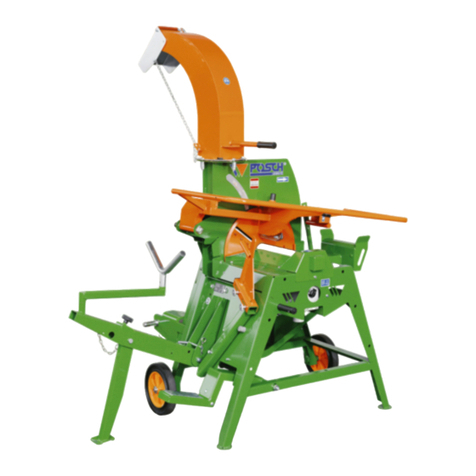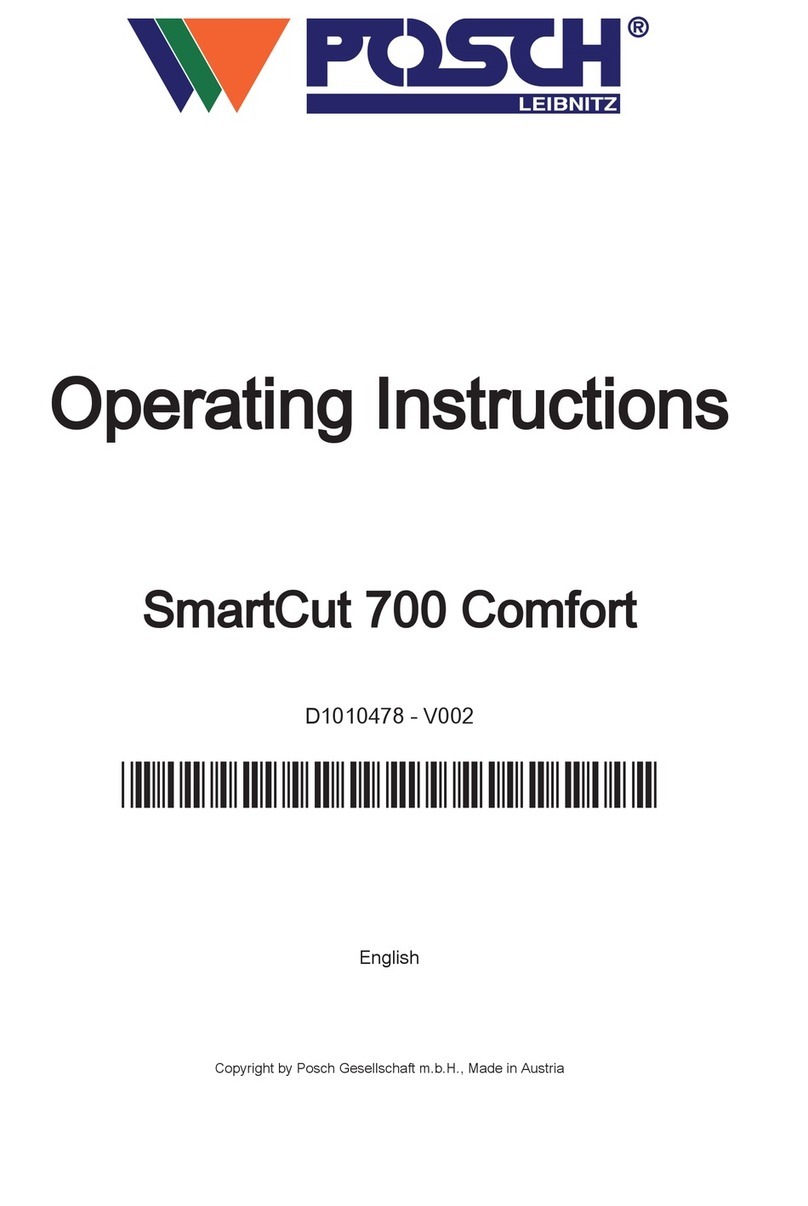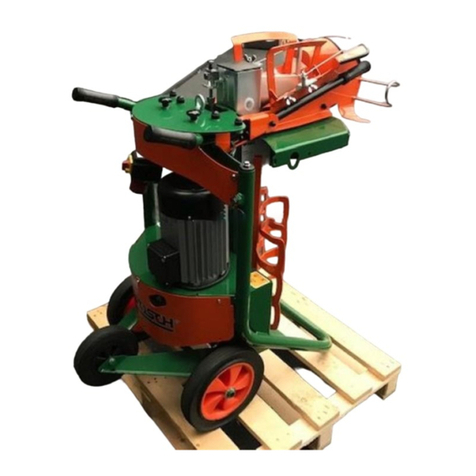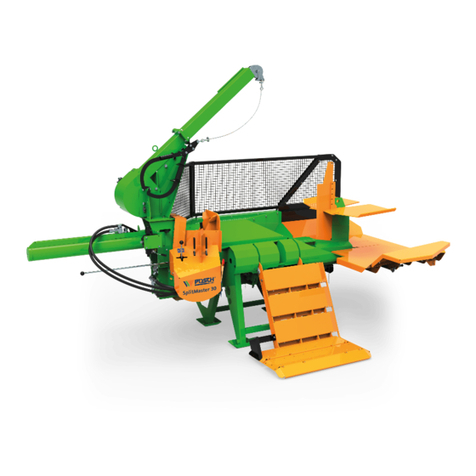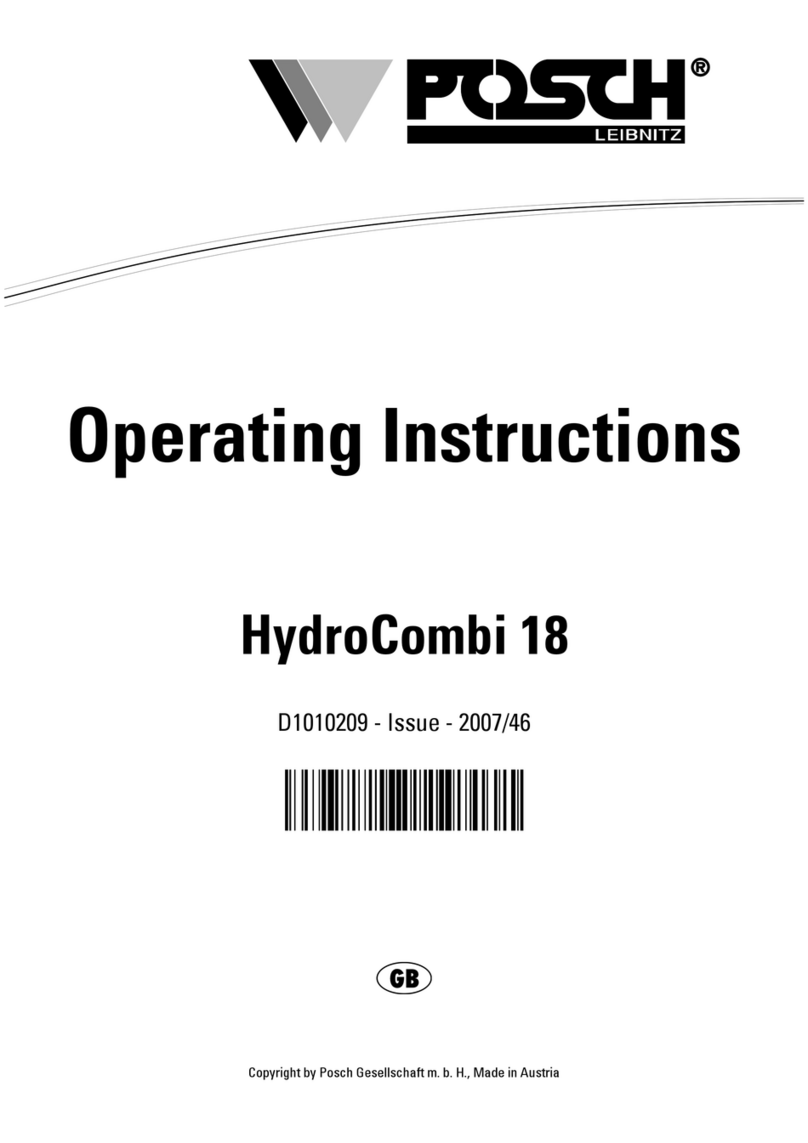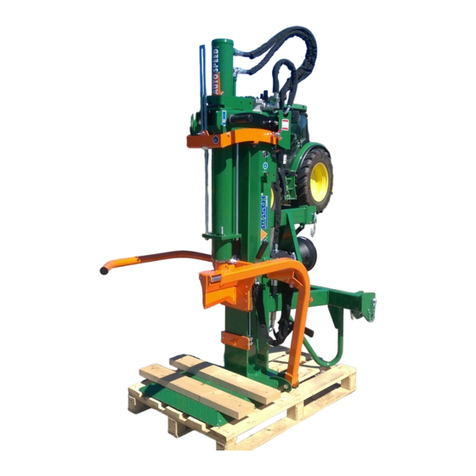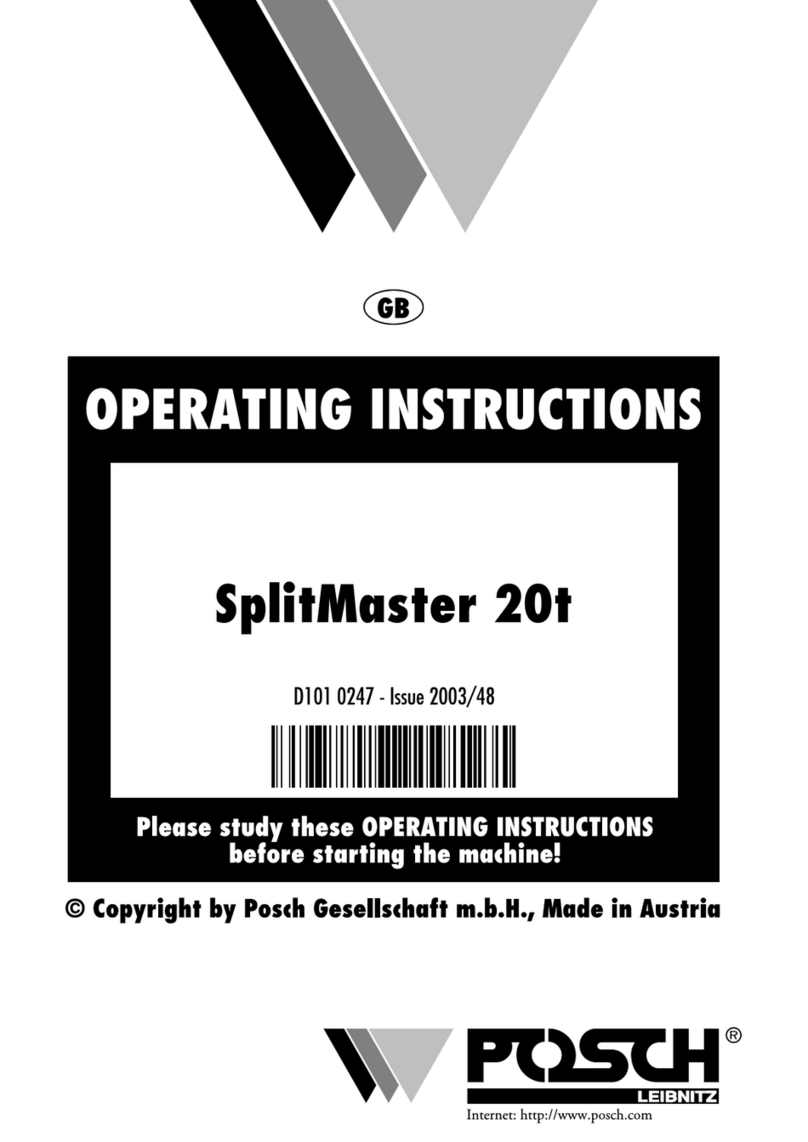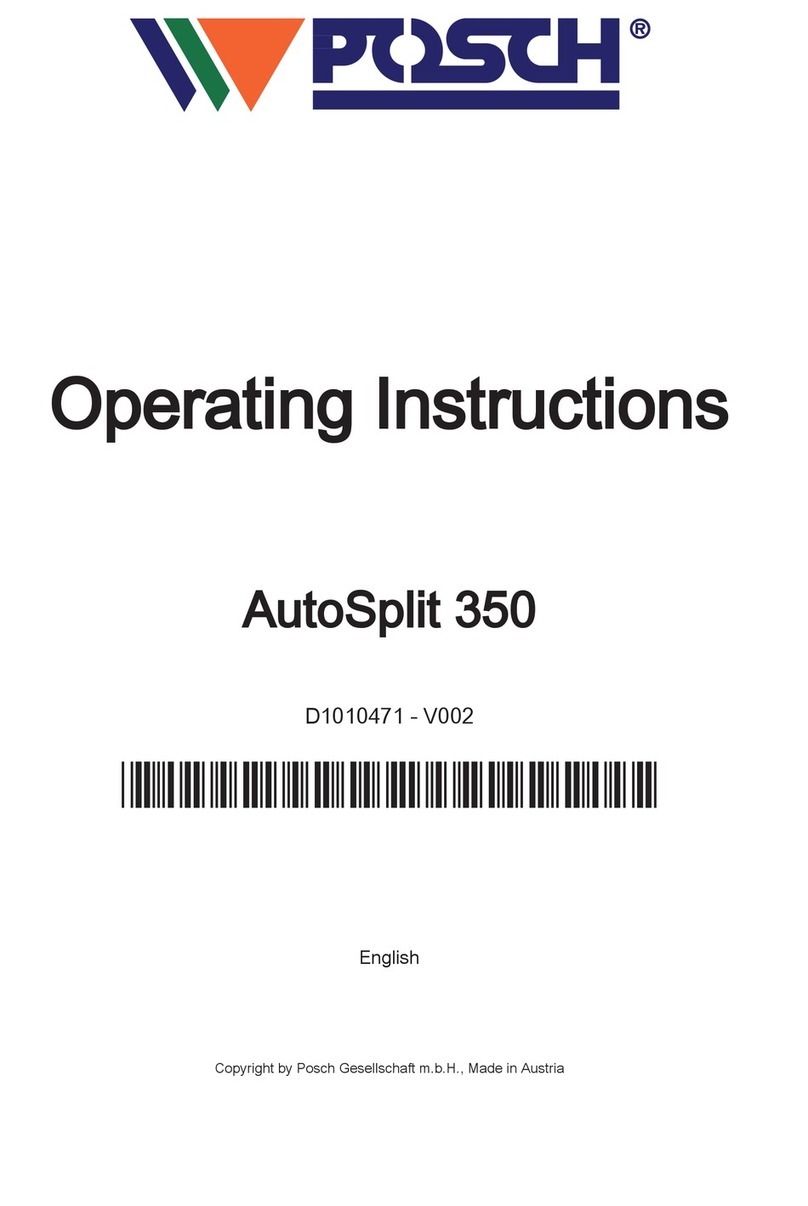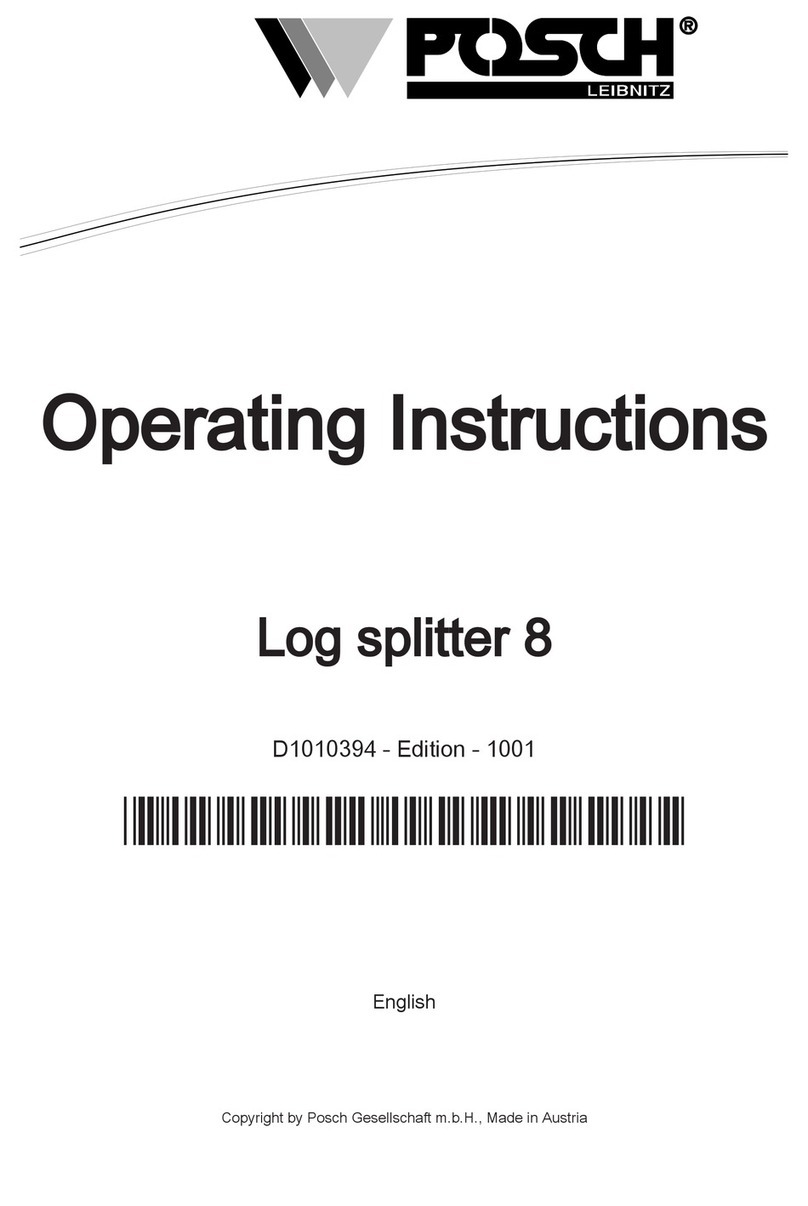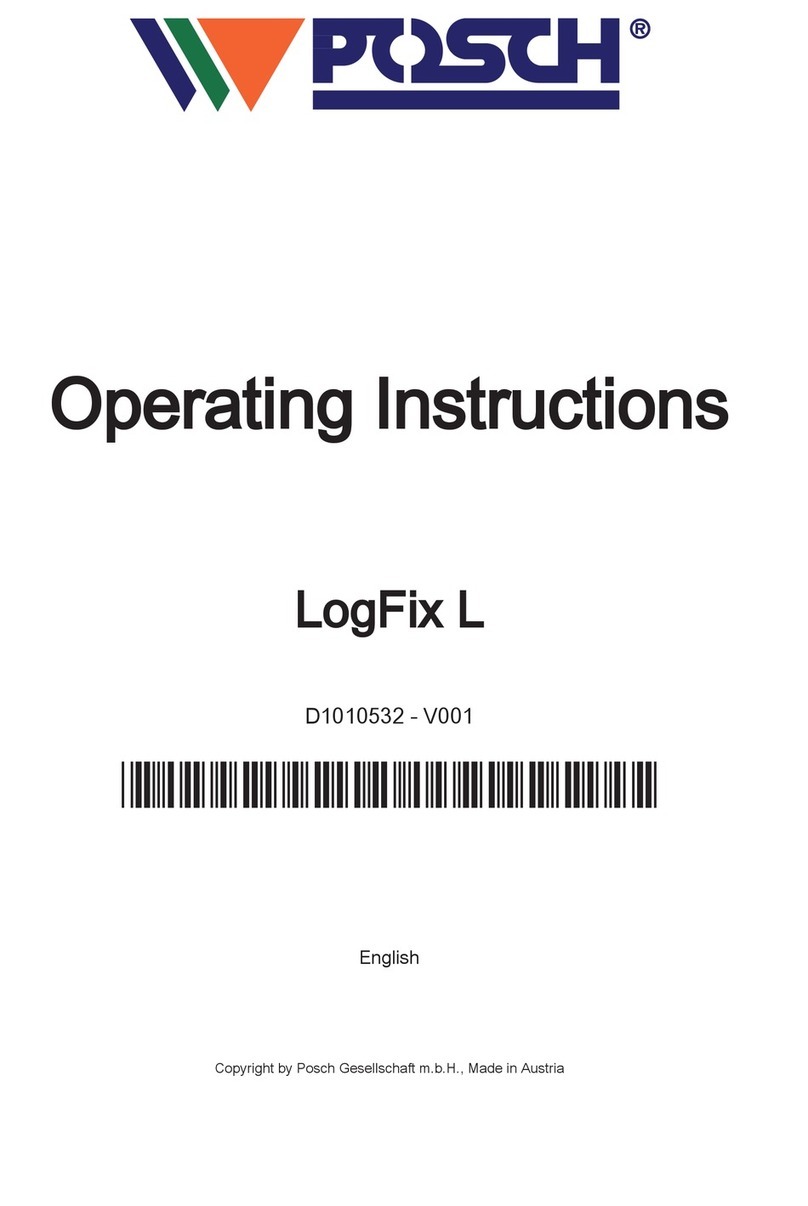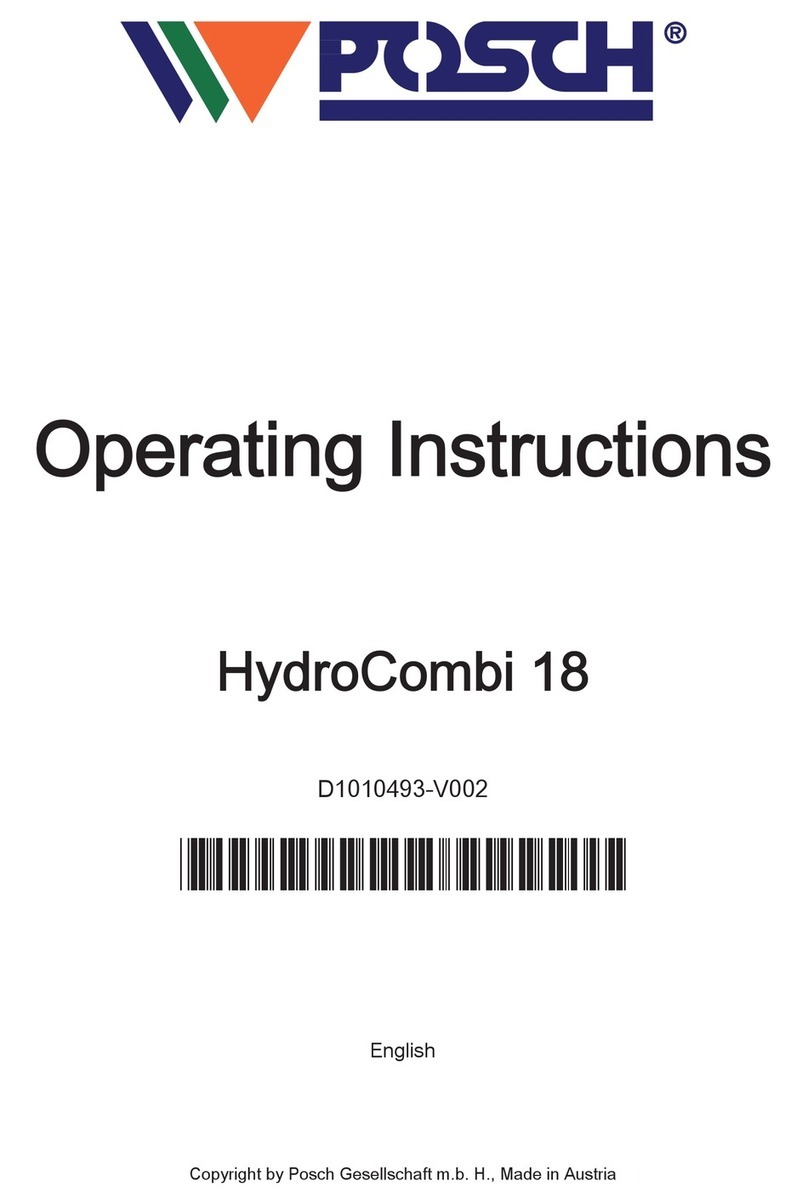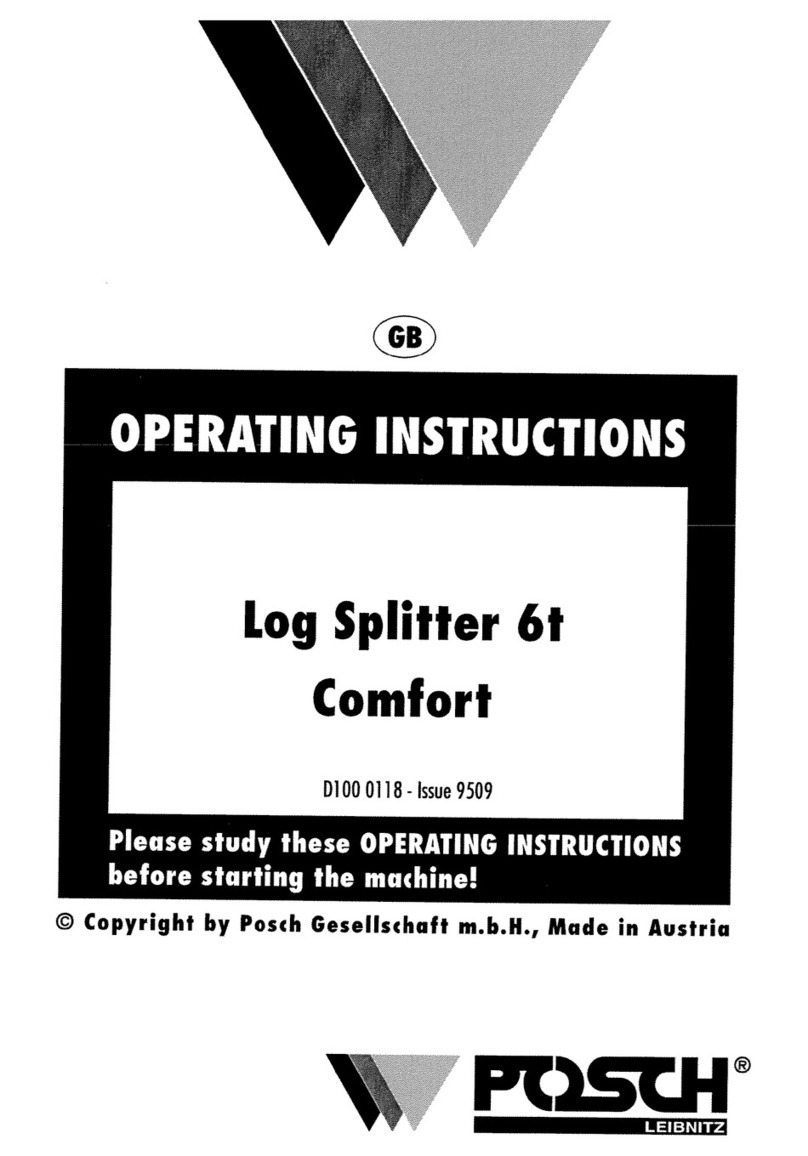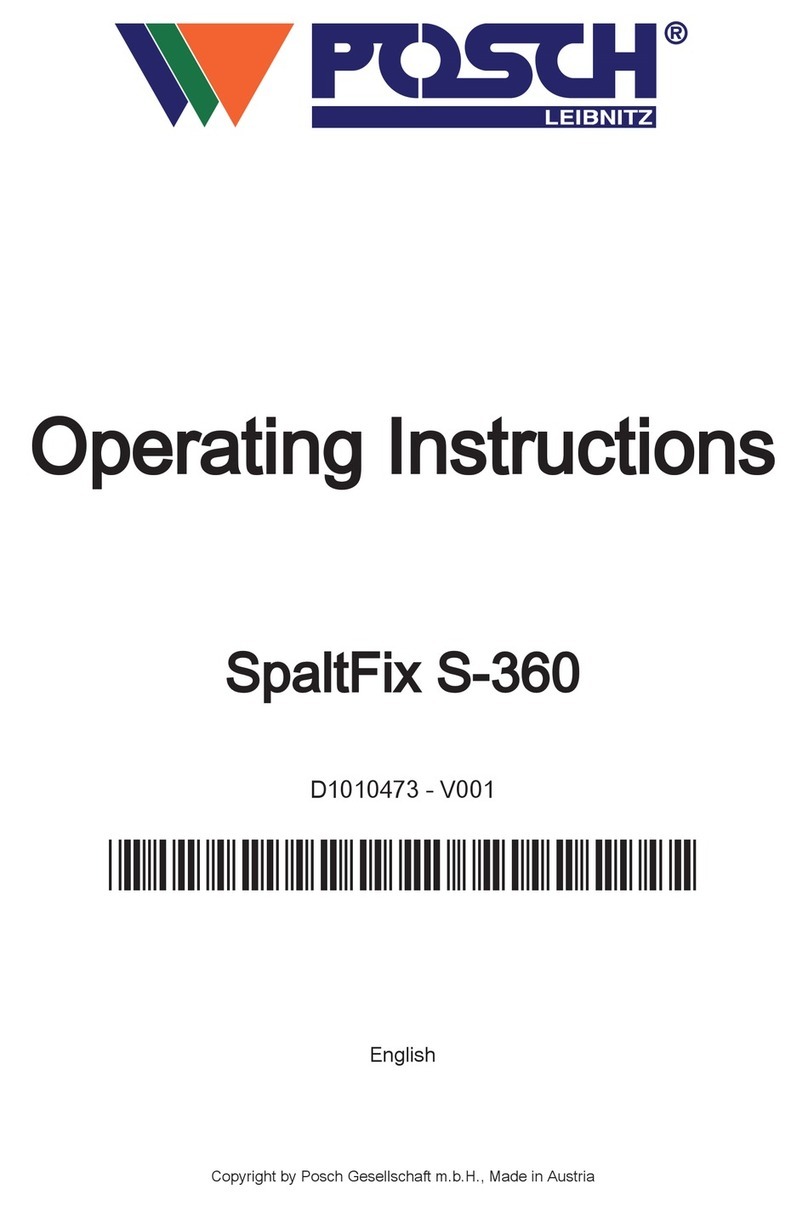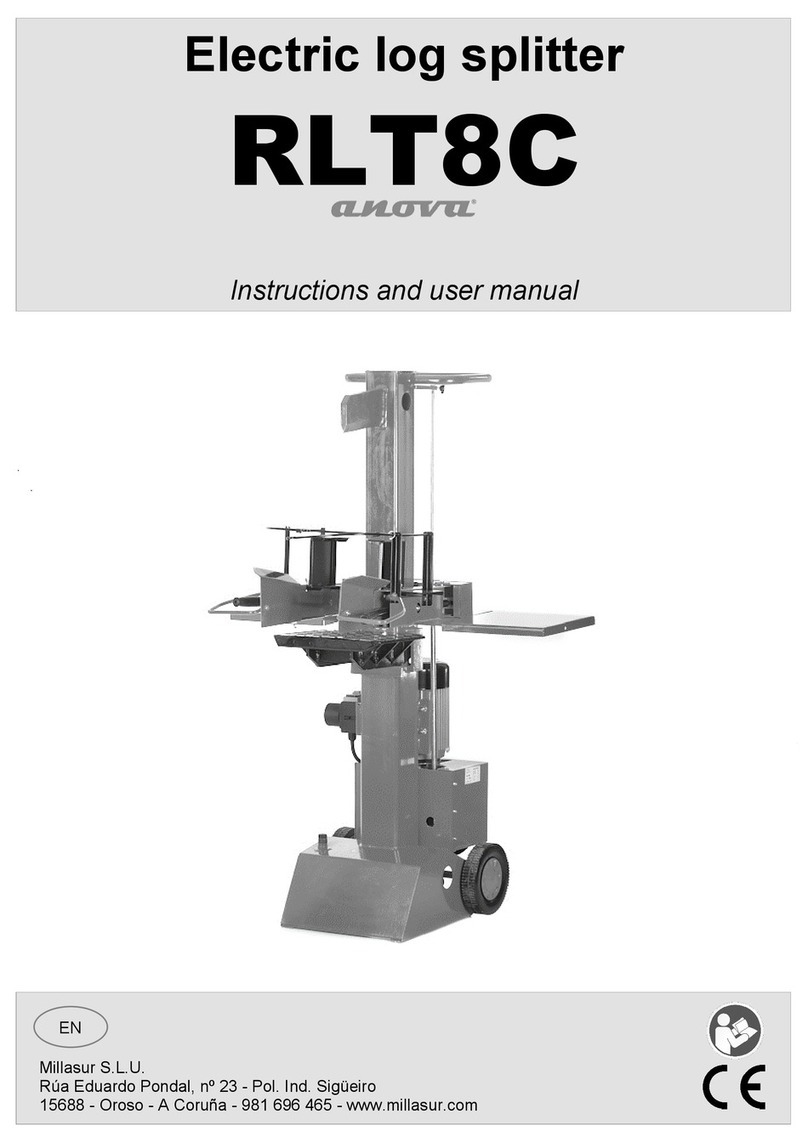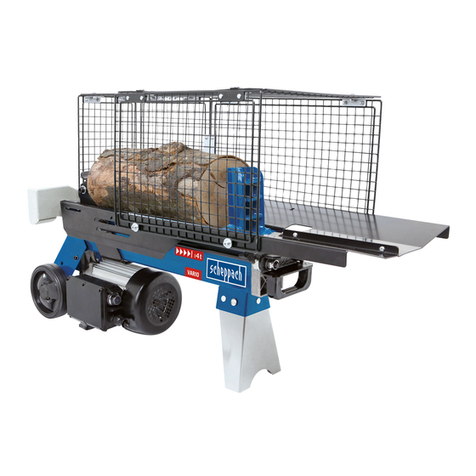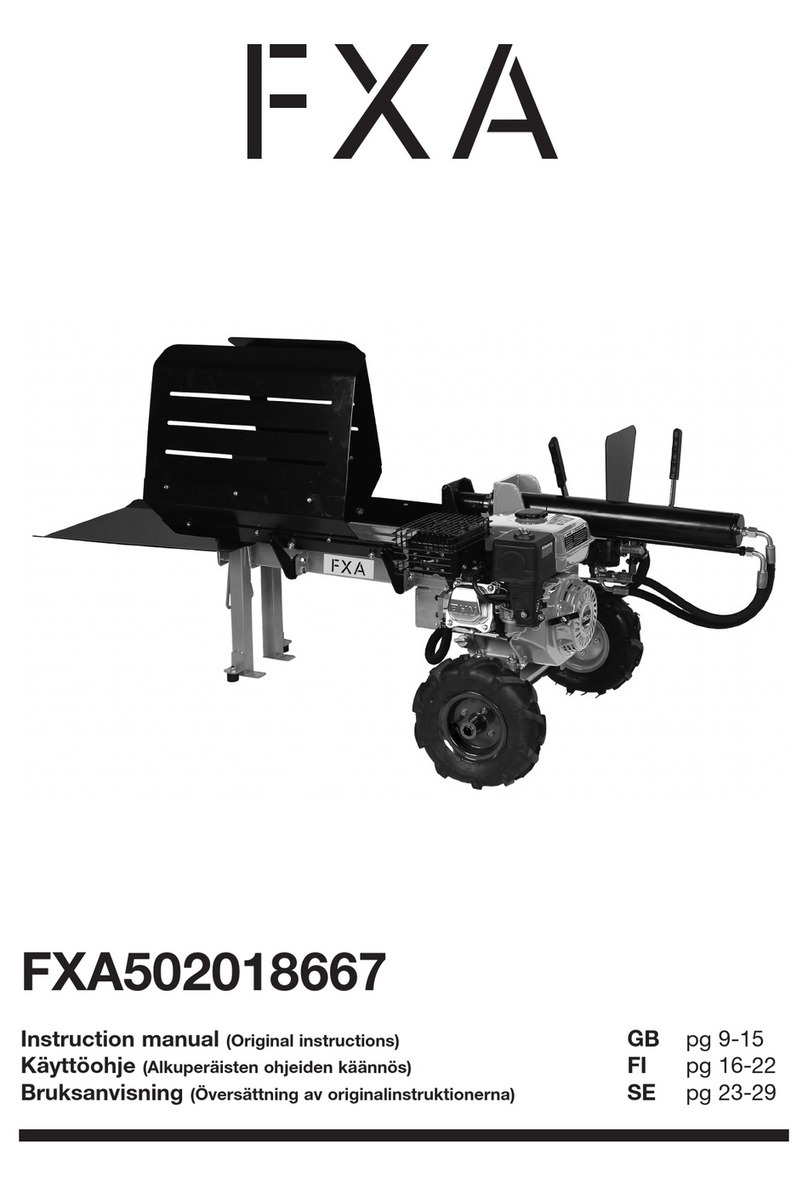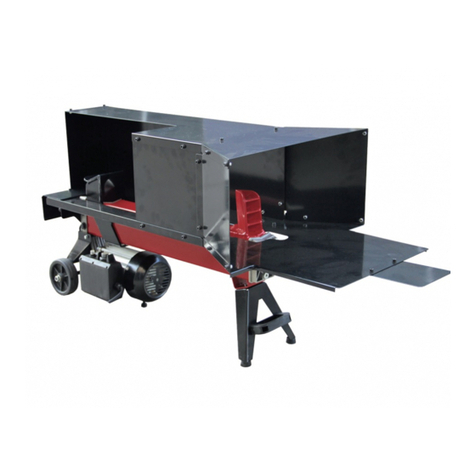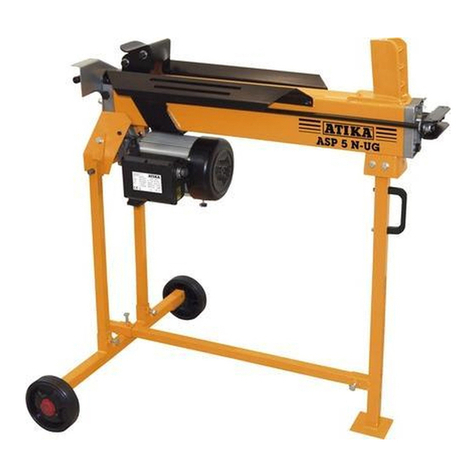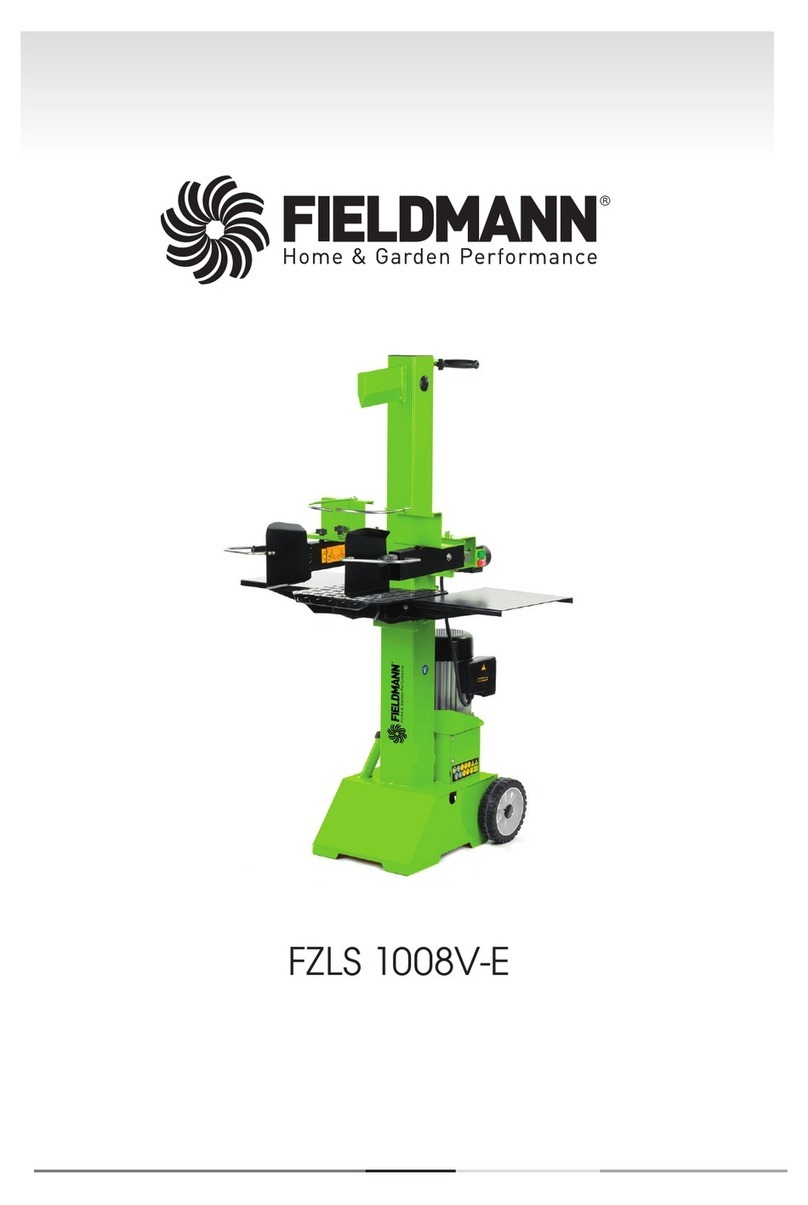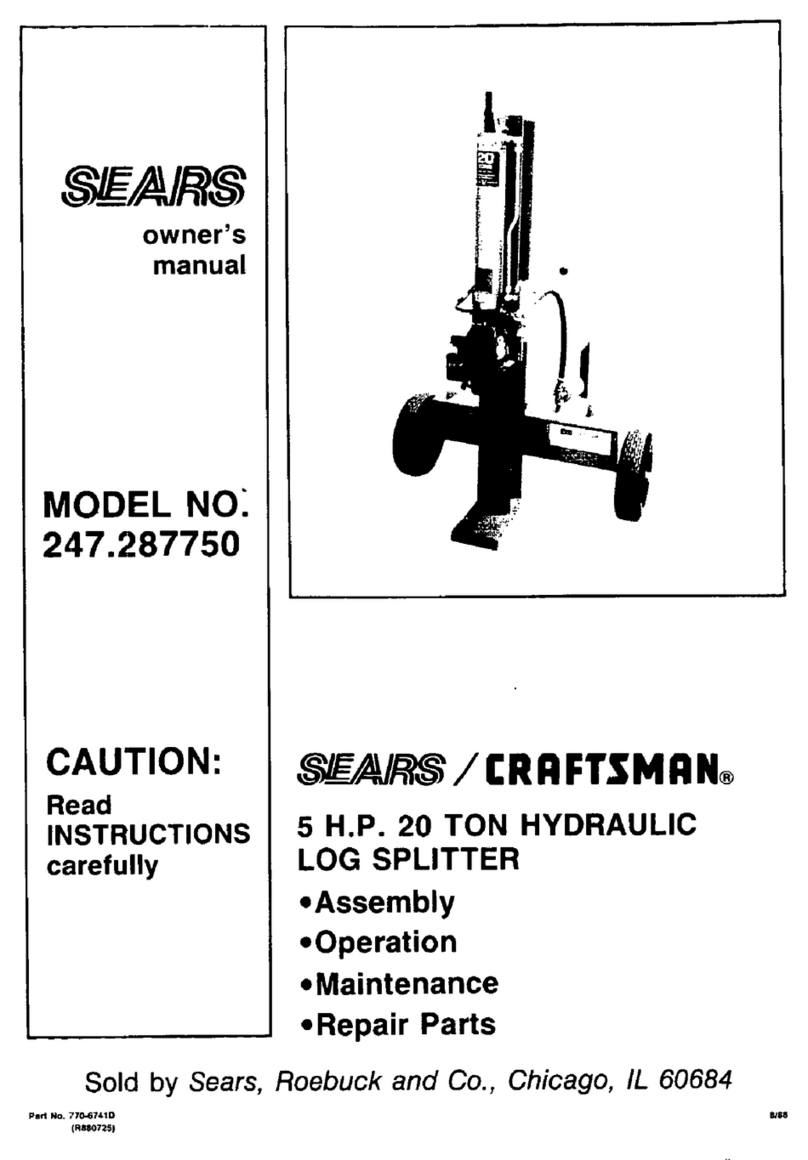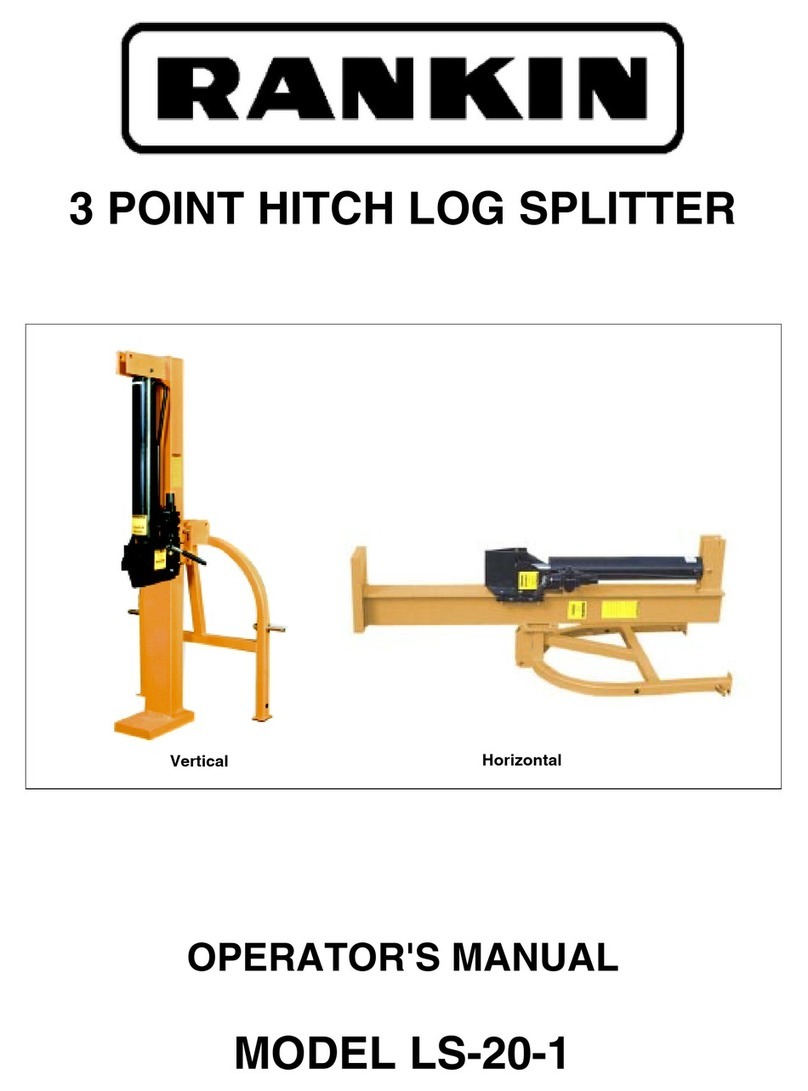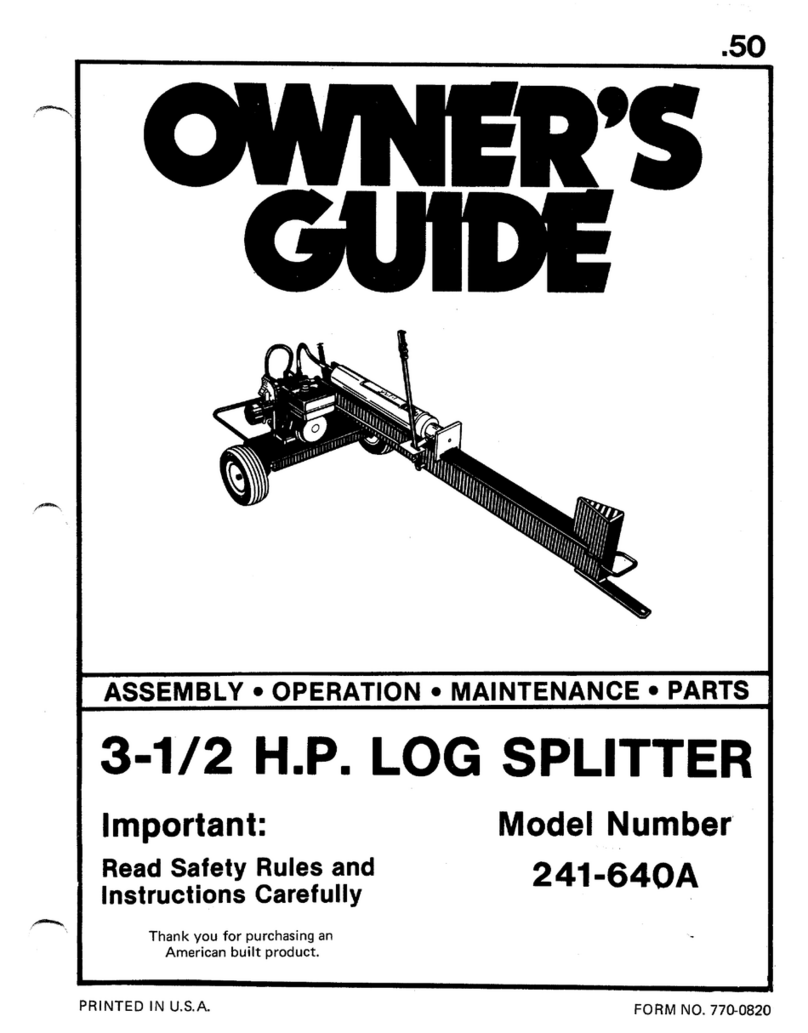
Only use original - POSCH - spare parts.
Do not modify or tamper with the machine.
Work on electrical equipment must only be carried out by qualified electricians.
Never use damaged cables.
Machines with electric motors must not be used in the rain as this can lead to a malfunction
of the switch or the motor.
Safety instructions for log splitter
Prior to starting up the machine, the machine operator must agree the safety provisions with
the operator for wood manipulation (crane, forklift, front-end loader, etc.) and must observe
these safety provisions and the safety instructions from the wood manipulation operator.
▪ This may mean that the machine operator is required to leave the place of operation
while the wood feed is loaded, in order to comply with the necessary safety distances.
Do not hold the log with your hand while splitting.
Do not reach into the splitting area.
Wear safety shoes and close-fitting clothes when working with this device.
Only use the machine outdoors.
▪ Exception: machines operated by electricity.
Wear protective gloves.
Never split angle-cut wood.
Keep the work area free of chips and wood residues.
Shut the drive down before removing any jammed pieces of wood.
Max. log length
Always retract the splitting tool when the machine is being transported or is not in operation.
The working pressure of the hydraulic system must not exceed 255 bar.
Safety instructions for rope winches
Ensure that the rope is not pulled over sharp edges!
Never guide the rope by hand whilst reeling it in!
Noise
The workplace-related, A-rated emission sound pressure level is 70 dB(A), measured at the
operative's ear.
In the case of machines with a PTO drive, the noise level depends on the noise of the tractor.
Ear protection is therefore necessary.
The stated values are emissions values, and thus do not necessarily represent reliable
values for the work area. Although there is a correlation between emission and pollutant
levels, it is not possible to deduce reliably from that whether or not additional precautionary
measures are necessary. Factors that influence the level of pollutants present in the work
area include the individual nature of the work area, other sources of noise, e.g. the number
of machines and other work operations being carried out in the vicinity. Equally, permissible
values for a work area may vary between different countries. However, this information
should enable the user to estimate the dangers and risks more accurately.
2.3
2.4
2.5
Safety information
9
